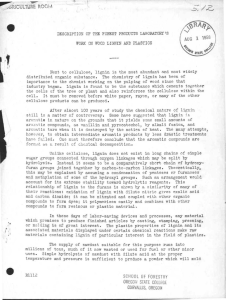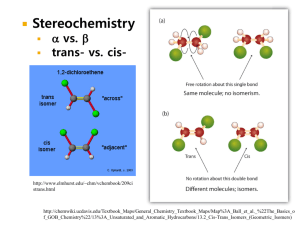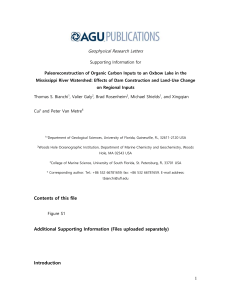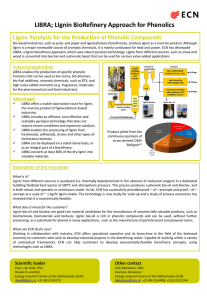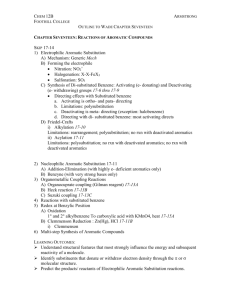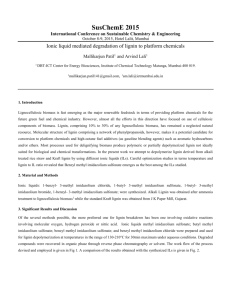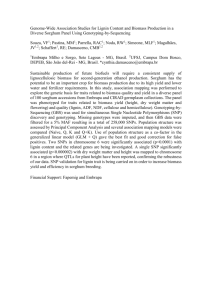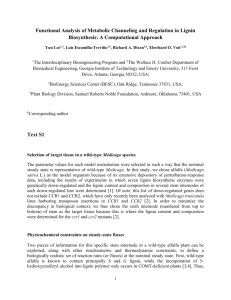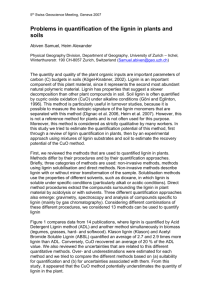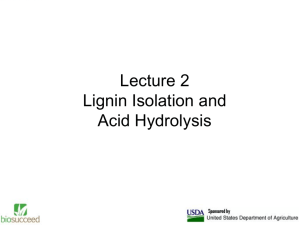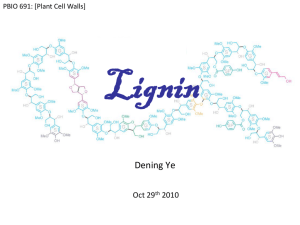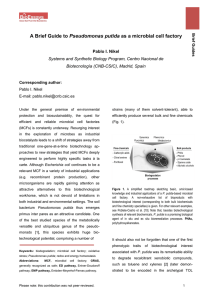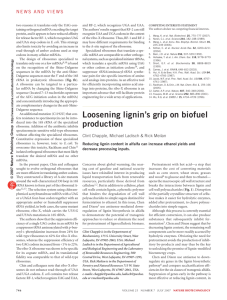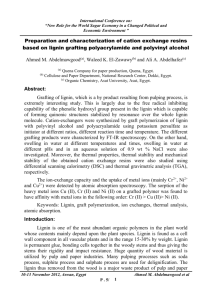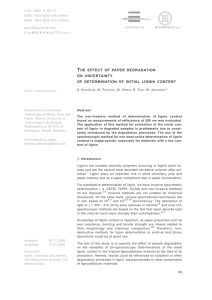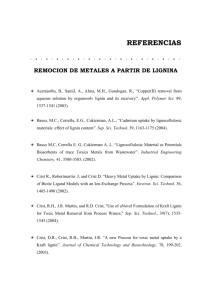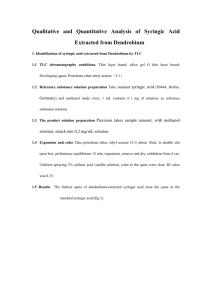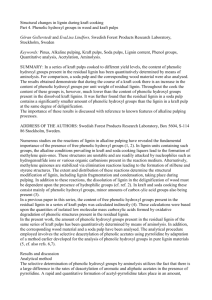310715183006AbstractSuschem
advertisement
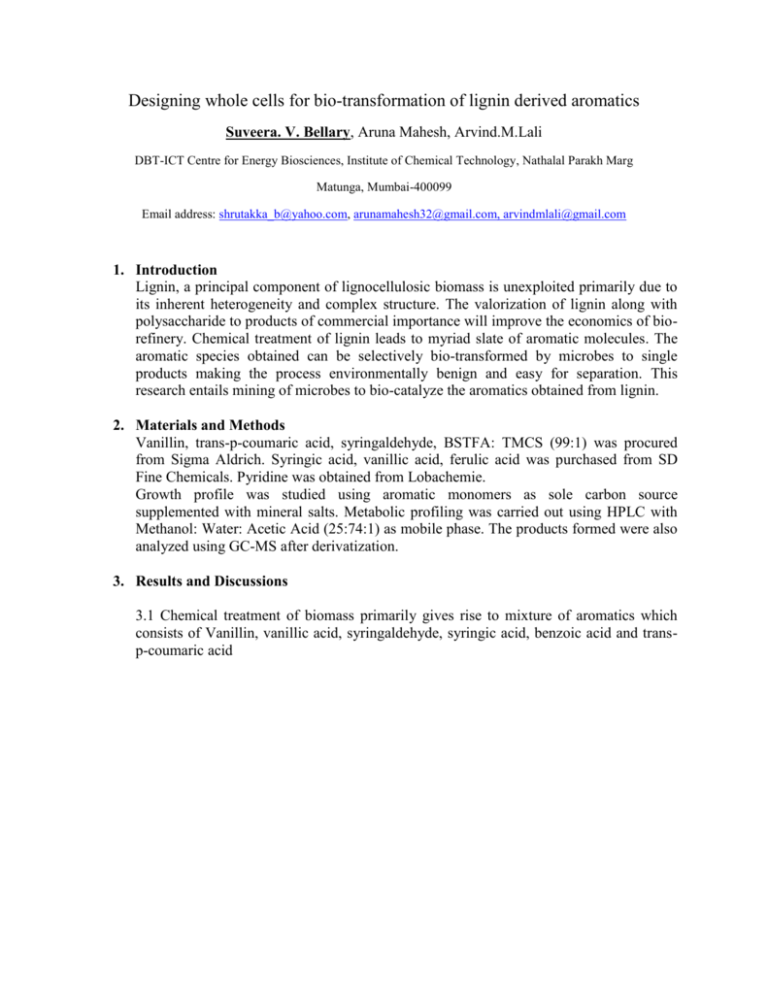
Designing whole cells for bio-transformation of lignin derived aromatics Suveera. V. Bellary, Aruna Mahesh, Arvind.M.Lali DBT-ICT Centre for Energy Biosciences, Institute of Chemical Technology, Nathalal Parakh Marg Matunga, Mumbai-400099 Email address: shrutakka_b@yahoo.com, arunamahesh32@gmail.com, arvindmlali@gmail.com 1. Introduction Lignin, a principal component of lignocellulosic biomass is unexploited primarily due to its inherent heterogeneity and complex structure. The valorization of lignin along with polysaccharide to products of commercial importance will improve the economics of biorefinery. Chemical treatment of lignin leads to myriad slate of aromatic molecules. The aromatic species obtained can be selectively bio-transformed by microbes to single products making the process environmentally benign and easy for separation. This research entails mining of microbes to bio-catalyze the aromatics obtained from lignin. 2. Materials and Methods Vanillin, trans-p-coumaric acid, syringaldehyde, BSTFA: TMCS (99:1) was procured from Sigma Aldrich. Syringic acid, vanillic acid, ferulic acid was purchased from SD Fine Chemicals. Pyridine was obtained from Lobachemie. Growth profile was studied using aromatic monomers as sole carbon source supplemented with mineral salts. Metabolic profiling was carried out using HPLC with Methanol: Water: Acetic Acid (25:74:1) as mobile phase. The products formed were also analyzed using GC-MS after derivatization. 3. Results and Discussions 3.1 Chemical treatment of biomass primarily gives rise to mixture of aromatics which consists of Vanillin, vanillic acid, syringaldehyde, syringic acid, benzoic acid and transp-coumaric acid Trans-pCoumaric acid Syringaldehyde Vanillic acid Vanillin Syringate Benzoic acid Fig 1: GC-MS chromatogram of biomass-pretreated liquor containing aromatics 3.2 Growth and metabolic profile of microbes: The aromatics present in the liquor were used individually and in combination to study growth Growth profile on mixture of Vanillin, Vanillic acid, Syringaldehyde and Syringic acid 0.35 O.D at 600 nm 0.3 0.25 Pseudomonas putida KT2440 0.2 0.15 Pseudomonas putida S12 0.1 Pseudomonas putida isolate 0.05 0 0 50 100 150 Time(hrs) Fig 2: Growth profile of strains on mixture of aromatics (1mM each) Pseudomonas putida KT 2440 was unable to utilize syringic acid and syringaldehyde despite being a known strain for biotransformation of aromatic compounds. Therefore Pseudomonas putida S12 and isolate Pseudomonas putida were studied. Tolerance study was also performed on each aromatic and both the strains can sustain concentrations up to 15mM. Metabolic profiling was carried out to ascertain the intermediates generated during catabolism of these compounds. Both the strains are able to utilize lignin derived compounds without having any inhibitory effect. 4. Conclusion The two Pseudomonas strains possessing complete aromatic catabolic potential are being evaluated for their bio-catalytic capabilities on lignin stream and can be further subjected to genetic engineering for synthesis of value added products. 5. References [1]Salvachua et al, Towards Lignin consolidated bioprocessing- Simultaneous lignin depolymerization and product generation by bacteria, Green Chemistry, RSC Publishing, June 2015 [2]Linger et al, Lignin valorization and through integrated biological funneling and chemical catalysis, PNAS, August 2014, 12013-12018 [3]Wang et al. Connecting lignin degradation pathway with pre-treatment inhibitor sensitivity of Cupriavidus necator. Frontiers in Microbiology, May 2014.
